
Wetenschap
NASA wil je hulp bij het ontwerpen van een sterrenscherm om exoplaneten te observeren
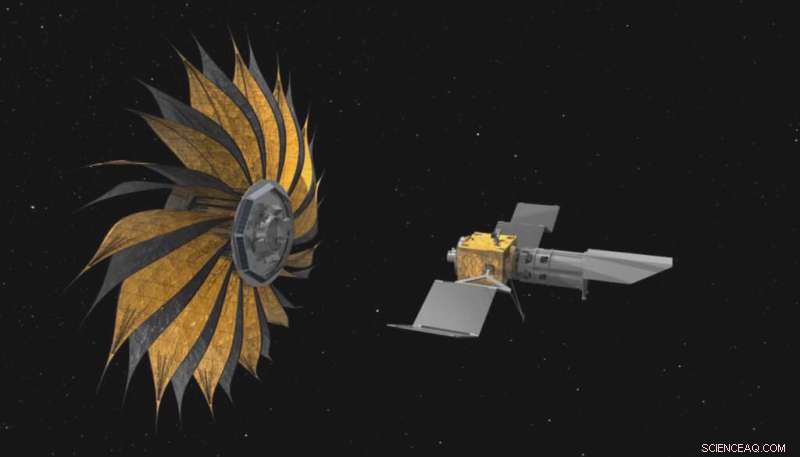
Artist's concept van het prototype starshade, een gigantische structuur die is ontworpen om de schittering van sterren te blokkeren, zodat toekomstige ruimtetelescopen foto's van planeten kunnen maken. Krediet:NASA/JPL
Het onderzoeksgebied van exoplaneten heeft de afgelopen decennia een lange weg afgelegd. Tot op heden zijn 5.063 exoplaneten bevestigd in 3.794 systemen buiten de onze, en nog eens 8.819 kandidaten wachten op bevestiging. De komende jaren zullen naar verwachting tienduizenden meer planeten worden gevonden, dankzij observatoria van de volgende generatie. Het uiteindelijke doel van deze zoektocht is om planeten te vinden die "aardachtig" zijn, wat betekent dat ze een goede kans hebben om leven te ondersteunen. Dit is geen gemakkelijke taak, aangezien rotsachtige planeten die zich binnen de bewoonbare zones (HZ's) van hun moederster bevinden, de neiging hebben om dicht bij elkaar te draaien, waardoor ze moeilijker te zien zijn.
Om dit proces gemakkelijker te maken, ontwerpt NASA een hybride observatorium dat bestaat uit een "Starshade" die het licht van een ster blokkeert, zodat een telescoop op de grond direct de planeten kan afbeelden die eromheen draaien. Het concept staat bekend als het Hybrid Observatory for Earth-like Exoplanets (HOEE), en NASA is op zoek naar publieke input om het te realiseren. Daartoe hebben ze de Ultralight Starshade Structural Design Challenge gelanceerd, waarbij deelnemers wordt gevraagd een ontwerp te ontwikkelen voor een lichtgewicht starshade-structuur die kan worden gebruikt als onderdeel van het HOEE-concept.
De uitdaging wordt gehost door GrabCAD, een in Massachusetts gevestigde startup die een gratis cloudgebaseerd platform host dat technische teams helpt bij het samenwerken en beheren, bekijken en delen van Computer-Aided Design (CAD)-bestanden. Het NASA Tournament Lab beheert de uitdaging, die de NASA Innovative Advanced Concepts (NIAC) -studie van het HOEE-concept ondersteunt. De uitdaging maakt deel uit van NASA's Prizes, Challenges, and Crowdsourcing-programma, onder toezicht van NASA's Space Technology Mission Directorate (STMD).
Tot op heden zijn de meeste bekende exoplaneten bevestigd door middel van indirecte methoden. Deze omvatten de Transit-methode (ook bekend als Transit Photometry), waarbij periodieke dalingen in de helderheid van een ster worden gebruikt om de aanwezigheid te detecteren van een of meer planeten die ervoor passeren (overgaand) ten opzichte van de waarnemer. Een andere is de radiale snelheidsmethode (ook bekend als Doppler-spectroscopie), waarbij de beweging van een ster heen en weer (ten opzichte van de waarnemer) wordt gebruikt om de zwaartekrachtsinvloeden te bepalen die op de ster (d.w.z. een systeem van planeten) inwerken.
Wanneer ze in combinatie worden gebruikt, zijn deze methoden zeer effectief in het beperken van de grootte en omlooptijd van exoplaneten (Transit-methode) en hun respectieve massa's (Radial Velocity Method). Met instrumenten van de volgende generatie, zoals de James Webb Space Telescope (JWST), kunnen astronomen echter Direct Imaging-onderzoeken van exoplaneten uitvoeren. In dit geval wordt licht van verre exoplaneten direct opgevangen en geanalyseerd met een spectrometer. De verkregen spectra kunnen gegevens opleveren over de oppervlaktemineralen van een planeet en de aanwezigheid van oceanen, continenten, weersystemen, vegetatie en de gassen waaruit de atmosfeer bestaat bepalen.
Met deze gegevens kunnen astronomen en astrobiologen exoplaneten karakteriseren en vol vertrouwen zeggen of een planeet "bewoonbaar" is of niet. Een belangrijk onderdeel van deze methode is de coronagraaf, een instrument dat de schittering van moedersterren blokkeert, zodat het licht dat door exoplaneetatmosferen wordt weerkaatst, met spectrometers kan worden gevisualiseerd en gescand om de chemische samenstelling te bepalen. Zei Dr. John Mather, een senior astrofysicus bij NASA's Goddard Space Flight Center en een senior projectwetenschapper voor de JWST:
"The hybrid observatory might help us answer some of the most pressing questions about extraterrestrial life. Observing many systems would help answer the question of why configurations like our own are rare and why none is quite like home. It is truly exciting that the public can be part of this revolutionary effort. I can't wait to see what ideas they bring to the table."
The key to the HOEE is the "Starshade" spacecraft, a concept introduced by the Habitable Exoplanet Observatory (HabEx) at NASA JPL back in 2016. Initially, it was thought that only space telescopes like the James Webb and the Nancy Grace Roman Space Telescope (RST) could benefit from a starshade-type spacecraft. But with the HOEE concept, ground-based telescopes that fall into the 30-meter-class (~100 ft) range could also conduct Direct Imaging surveys. This includes next-generation observatories like the Extremely Large Telescope (ELT), Giant Magellan Telescope (GMT), and the Thirty Meter Telescope (TMT).
For the Ultralight Starshade Structural Design Challenge, NASA is looking for ideas for a lightweight starshade that could accomplish that very task. According to NASA, the goal of this challenge is to develop an "innovative low-mass starshade structure that could meet the mass, shape, strength, and stiffness requirements." Participants are free to choose from four suggested designs (or a hybrid thereof), which include:
- Ultralight version of the current JPL HabEx concept
- Umbrella with petals
- Rigidizable inflated structure
- Truss-based structures
The ideal design, they state, will allow for compact packaging and successful deployment once in Earth's orbit. In other words, it must be able to collapse and fold up so the spacecraft can fit inside a rocket payload fairing, then unfurl once it reaches space. This is similar to what engineers accomplished with James Webb, especially where its primary mirror and sunshield were concerned. They also stress that it must have the lowest possible mass to be easier (and cheaper) to launch, that its chemical thrusters can keep it aligned during observations, and change its orbit to observe different targets.
These and other details (including orbital distance and the starshade's diameter) are specified on the challenge page:
"An orbiting starshade (170,000 km away) could cast a shadow of the central star without blocking the reflected light from its planets. So that it can be used with the largest ground-based telescopes, the starshade needs to be 100 m in diameter. This large structure must be tightly packaged so that it can fit inside the fairing of a large rocket (e.g., Falcon Heavy or Starship).
"It must also have the lowest possible mass so that chemical thrusters can keep it aligned during observations and solar electric propulsion system can change its orbit to observe many targets. NASA seeks breakthrough mechanical/structural concepts for a deployable, low mass, high stability, and high stiffness starshade structure."
In order to be eligible for this challenge, participants must either be U.S. citizens or from an eligible country (specified here). The top five submissions will share a prize purse of $7,000. The full list of the competition requirements and all relevant information and documentation are posted on the GrabCAD challenge page. + Verder verkennen
Astronomers present a concept for the next NASA flagship mission
 88 miljoen ton per jaar:controleurs keuren voedselverspilling in de EU af
88 miljoen ton per jaar:controleurs keuren voedselverspilling in de EU af NASA ziet Systeem 91P samenkomen ten oosten van Queensland
NASA ziet Systeem 91P samenkomen ten oosten van Queensland Onderzoekers kijken om te zien hoe verheven woningen in Florida bestand zijn tegen orkaan Michael
Onderzoekers kijken om te zien hoe verheven woningen in Florida bestand zijn tegen orkaan Michael Koolstofgasopslagcaverne is de beste manier om schone energie uit een fossiele brandstof te halen
Koolstofgasopslagcaverne is de beste manier om schone energie uit een fossiele brandstof te halen Sardines
Sardines
Hoofdlijnen
- Komt mitose voor in Prokaryoten, Eukaryoten of Beide?
- Het belang van asymmetrie bij bacteriën
- Drummen bij spechten lijkt neurologisch op zingen bij zangvogels
- Slangenmans gifgewoonte houdt hoop op nieuw tegengif
- Hoe de droogrot Serpula lacrymans zich aanpasten aan een nieuwe ecologische habitat
- Hoe de Amoeben zich reproduceren?
- Planten die stikstof uit de lucht halen, gedijen goed in droge omgevingen
- Wat is het verschil tussen een protist en een menselijke huidcel?
- Gerst is de smaak van de maand, aangezien nieuwe studie het eeuwenoude brouwdebat beslecht
- Gedetailleerde afbeeldingen van Schiaparelli en zijn afdalingshardware op Mars
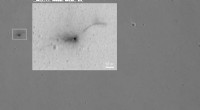
- NASA's Mars 2020 gaat de testkamer binnen
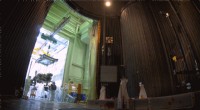
- Help NASA-asteroïdemissie bij het kiezen van een voorbeeldlocatie met behulp van PSI's CosmoQuest
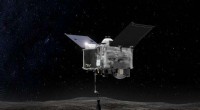
- Met SpaceX-partnerschap, ISS gaat zijn Gouden Eeuw in, maar wat komt er daarna?
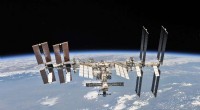
- Superzware zwarte gaten gevonden in twee kleine sterrenstelsels
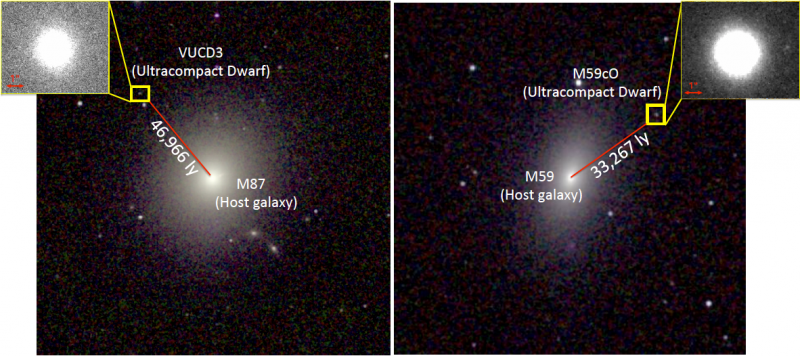
 Japanse ruimterobots starten asteroïde-onderzoek
Japanse ruimterobots starten asteroïde-onderzoek Overheidswerkers in Australië geven voorrang aan welzijn boven loon
Overheidswerkers in Australië geven voorrang aan welzijn boven loon  Senaatscommissie steunt ternauwernood de keuze van Trump voor NASA-chef
Senaatscommissie steunt ternauwernood de keuze van Trump voor NASA-chef Sigarettenpeuken vormen een groot gevaar voor microplastics in de oceanen
Sigarettenpeuken vormen een groot gevaar voor microplastics in de oceanen Door spanning toe te voegen, onderzoekers verbeteren metaalglas
Door spanning toe te voegen, onderzoekers verbeteren metaalglas Stellaire populaties van NGC 5053 onderzocht met AstroSat
Stellaire populaties van NGC 5053 onderzocht met AstroSat Klimaatverandering verantwoordelijk voor ravage in Noordoost-VS overstromingen
Klimaatverandering verantwoordelijk voor ravage in Noordoost-VS overstromingen Boomval tijdens het droge seizoen in de stad São Paulo is te wijten aan slecht beheer, studie suggereert:
Boomval tijdens het droge seizoen in de stad São Paulo is te wijten aan slecht beheer, studie suggereert:
- Elektronica
- Biologie
- Zonsverduistering
- Wiskunde
- French | Italian | Spanish | Portuguese | Swedish | German | Dutch | Danish | Norway |

-
Wetenschap © https://nl.scienceaq.com

